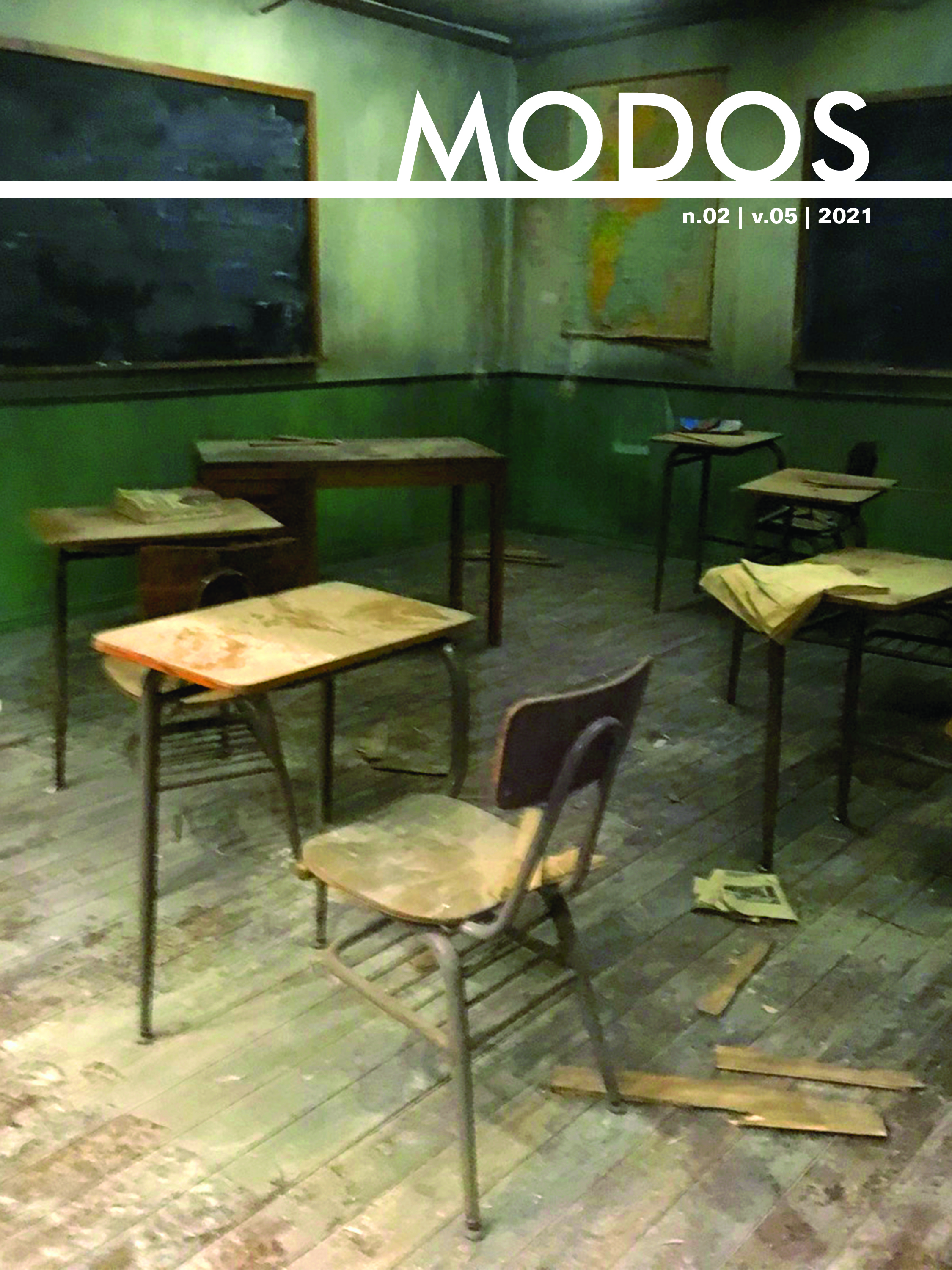Abstract
In this review, we intend to analyze the exhibition Hélio Oiticica: dance in my experience, which took place at the São Paulo Art Museum Assis Chateaubriand (MASP-SP) between October 13, 2020 and November 22, 2020. The exhibition in question, by giving centrality to the Parangolés, proposes a retrospective reading of the work of Hélio Oiticica, whose purpose is to search for choreographic, performance and rhythmic elements, important for the Parangolés, from the initial works of the carioca artist to the 1979 productions. In view of this proposition and of what is seen in the exhibition, we affirm that the curatorial project in question: (a) proposes an instigating point of view regarding the work of the Brazilian artist, (b) faces and indicates responses to the contradictory process of museological and cultural of Oiticica's estate and (c) builds an articulated link between various nuclei and projects present in the trajectory of the artist in question. Finally, we argue that the curatorial choice of Adriano Pedrosa and Tomás Toledo can be read as a response, whether intentional or not, to Michael Asbury's essay, “Hélio couldn’t dance”, and offers a possibility for us to think critically about Oiticica's relationship with popular and Afro-Brazilian cultures and arts.
References
ASBURY, M. O Hélio não tinha ginga. In: BRAGA, P. Fios soltos: a arte de Hélio Oiticica. São Paulo: Perspectiva, 2011, pp. 27-52.
BENJAMIN, W. Velhos brinquedos. In: _____. Reflexões sobre a criança, o brinquedo e a educação. São Paulo: Editora 34, 2009, pp. 81-89.
BRAGA, P. A cor da MÚSICA: há uma metafísica em Hélio Oiticica. ARS, v. 15, n. 30, pp. 49-62, ago. 2017.
BRAGA, P. Hélio Oiticica and the Parangolés: (ad)dressing Nietzsche’s Übermensch. Third Text, London, v. 17, n. 1, pp. 43-52, mar. 2003.
CONDURU, R. Índices afro na arte no Brasil nas décadas de 1960 e 1970. In: AVOLESE, C.; MENESES, P. (Orgs.). Arte não europeia: conexões historiográficas a partir do Brasil. São Paulo: Estação Liberdade; Vasto, 2020, pp. 143-153.
CONDURU, R. Metaesquema, metaforma, metaobra. ARS, v. 15, n. 30, pp. 63-73, ago. 2017.
CROCKETT. V. War heroes: por uma po-ética da negritude em Hélio Oiticica. In: PEDROSA, A.; TOLEDO, T. Hélio Oiticica: a dança na minha experiência. São Paulo: MASP, 2020, pp. 132-146.
FAVARETTO, C. A invenção de Hélio Oiticica. São Paulo: EDUSP, 2015.
NAVES, R. A forma difícil. São Paulo: Companhia das Letras, 2011.
NUNES, B. Lygia Clark e Hélio Oiticica. Rio de Janeiro: FUNARTE, 1987.
OITICICA, H. Aspiro ao grande labirinto. Rio de Janeiro: Rocco, 1986.
OITICICA, H. Bases fundamentais para uma definição do Parangolé. In: PEDROSA, A.; TOLEDO, T. Hélio Oiticica: a dança na minha experiência. São Paulo: MASP, 2020, pp. 290-292.
SCHWARZ, R. A atribulação de um pai de família. In: SCHWARZ, R. O pai de família e outros estudos. São Paulo: Companhia das Letras, 2008, pp. 22-29.

This work is licensed under a Creative Commons Attribution-NonCommercial-ShareAlike 4.0 International License.
Copyright (c) 2021 Rafael Marino

